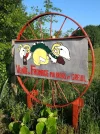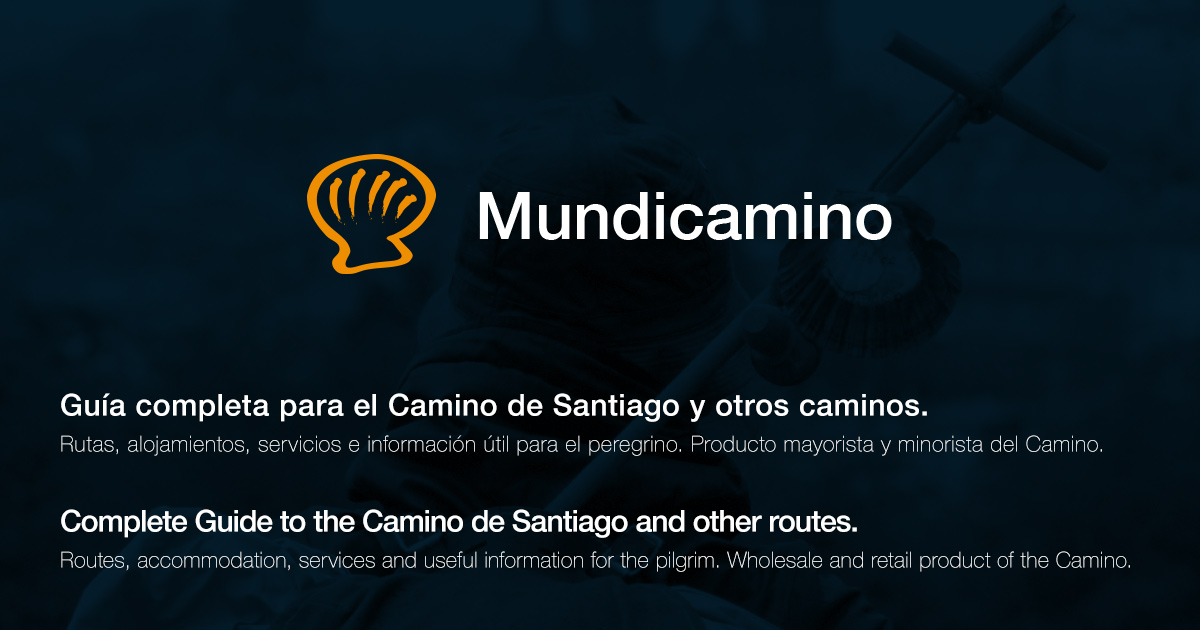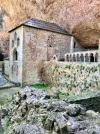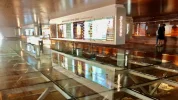diegoromerosm
Lost and found in the Camino
- Time of past OR future Camino
- 2023

| Remove ads on the forum by becoming a donating member. More here. |
|---|
Just a little reminder about the Camino Aragonés (or French through Aragón) with one of main ancient Christendom hospitals: Santa Cristina.
Amazing alternative to the most crowded one.
ultreia!
View attachment 91224
I was supposed to have been on pilgrimage last fall and was planning on starting at SJPP . I did not know about this alternative. How would I find out more about this route?
I think you are going to love this alternative. In the link, you can have a quick overview (stages, the starting point, ...). Here you have my post about the first stage (Somport to Jaca) and one video in YouTube.I was supposed to have been on pilgrimage last fall and was planning on starting at SJPP . I did not know about this alternative. How would I find out more about this route? I love the quiet fields and general lack of crowds.
Depending on how much time you have, I know that several forum members highly recommend starting at Oloron Ste. Marie, which is a two-day walk to the Somport Pass. That gives you the beauty of walking towards the mountains, as well as a little warm-up before ascending. You’ll find lots of information on it in the subforum @Marc S. linked you to.
The Aragonés does not get a lot of traffic. I cannot understand why — the infrastructure for pilgrims is great, the route is beautiful and goes through several pretty hill towns, and you can visit one of the wonders of the world, the Romanesque monastery at San Juan de la Peña.
Highly recommended!
I truly appreciate your input! My only concern is I will be walking alone..As well as San Juan de la Peña (west of Jaca), which is one of my 10-top-ever travel experiences, anyone passing through Jaca should have a look at the diocesan museum, a treasurehouse of early mediaeval art. Fans of S Francis Xavier can also look at a side-trip from Sangüesa to Javier to check out the castle where he grew up. I have never understood why the Aragonese was so lightly frequented aside from: a) there being no Martin Sheen film, and b) the absence of an easily accessible starting point.
Sounds perfect!Depending on how much time you have, I know that several forum members highly recommend starting at Oloron Ste. Marie, which is a two-day walk to the Somport Pass. That gives you the beauty of walking towards the mountains, as well as a little warm-up before ascending. You’ll find lots of information on it in the subforum @Marc S. linked you to.
The Aragonés does not get a lot of traffic. I cannot understand why — the infrastructure for pilgrims is great, the route is beautiful and goes through several pretty hill towns, and you can visit one of the wonders of the world, the Romanesque monastery at San Juan de la Peña.
Highly recommended!
Absolutely no worries! That valley (Valle de Tena) is one of the most visited areas in Aragón so you won't have any problem. And the albergue of Arrés is one of the best albergues in the Camino.I truly appreciate your input! My only concern is I will be walking alone..
Can't argue with that. The climb from Oloron up to the Somport is memorable. ... But! Let me suggest Lourdes as a starting point.... Lourdes is a strange but wonderful place. Worth experiencing..... And the several days' walk west from Lourdes to Oloron offers some of the most beautiful Shire-like scenery that I've ever enjoyed.Depending on how much time you have, I know that several forum members highly recommend starting at Oloron Ste. Marie, which is a two-day walk to the Somport Pass.

Absolutely! my last visit this summer (spheric photo).I walked two weeks to see San Juan de la Peña. It was worth it.
Sshhh... keep the secret!As well as San Juan de la Peña (west of Jaca), which is one of my 10-top-ever travel experiences, anyone passing through Jaca should have a look at the diocesan museum, a treasurehouse of early mediaeval art. Fans of S Francis Xavier can also look at a side-trip from Sangüesa to Javier to check out the castle where he grew up. I have never understood why the Aragonese was so lightly frequented aside from: a) there being no Martin Sheen film, and b) the absence of an easily accessible starting point.
I think you are going to love this alternative. In the link, you can have a quick overview (stages, the starting point, ...). Here you have my post about the first stage (Somport to Jaca) and one video in YouTube.
This is also the official info from the local agency.
Thank you!
Most of the pilgrims I met while walking the Aragones started at the Somport Pass, where there is a pilgrim hostel, and reached it by bus. I don't know where they began their bus trip, as I walked from Oloron Ste Marie after flying from Calgary to Toronto to Paris (Charles de Gaulle), bus to Orly, flight to Pau, bus into town, train to Oloron Ste Marie. This was a lengthy journey, with several delays, but I still started my walk from Oloron Ste Marie on the morning after my flight from Canada landed at Charles de Gaulle. I knew, from French tourist information, that the valley leading up to the Somport Pass was often very wet. But I had not expected the major storm which put out all the electricity in Oloron Ste Marie and up the valley, leaving me arriving in town in the pitch dark and the pouring rain with nothing open to get food. Fortunately, I had a reservation for the night, with breakfast included. My adventure was just beginning. I do not see any particular challenge in doing the walk alone. I was 68 at the time.the absence of an easily accessible starting point.
My mistake: try this.I can’t get a connection to that last link ... just a blank page
Doesn’t the Aragonés have a connection to the Templars?
When I walked it was more than two days to somport pass , I thought it was poorly marked but it was 15 yes ago .I truly appreciate your input! My only concern is I will be walking alone..
Thank you for your account..In 2013 we took a train from Barcelona to Zaragoza, went upstairs to the bus station and took the bus to Jaca .From there a bus to Somport arriving at 3 pm. After a coffee we walked back down to Canfranc Estacion and slept there. next day walked to Jaca and onwards. Loved the Aragones.
Thanks for the input!When I walked it, I flew to Toulouse, then trains and buses to the Somport pass.
As for walking it alone, there is a thread somewhere here with a ling discussion on that topic. I walked it alone (I am female) and thought it was fine.
@Pilgrim9 -If you google Aragones camino route map, you’ll likely find one quickly.
Also, the Confraternity of St James (https://www.csj.org.uk/routes ) had route maps and route overviews that I used in the past for planning purposes.

It would be great if there was a button or link at the top of these lesser-known-route threads that one could push to reveal an overview of the route on a map, or alternatively to all pilgrimage routes with the one in question highlighted or in bold or similar.

 www.santiagodecompostela.me
www.santiagodecompostela.me

 www.santiagodecompostela.me
www.santiagodecompostela.me
There are several good online sources for maps showing many of the routes.
...
Gronze has one: https://www.gronze.com/#todos
...
Out of curiosity, was your tour in Spanish or English? I did enjoy it, even just being in the building there was an almost tangible sense of the history of the place, but I'm afraid I understood very little of it.So glad I could do the tour at Canfranc Estacion as it was well worth it.
Gentians! Gorgeous.walked straight up to the Somport Pass
@NorthernLight , @Pilgrim9, there are many resources for maps and routes of the Camino Aragonés. I leave you some (in Spanish) and I have also left in my web the main ideas along with a map of the two main alternatives. I also include a link to the extension that allows you to visit one of the main points in the history and creation of the Kingdom of Aragon at the time of the Reconquest: San Juan de la Peña.@Pilgrim9 -If you google Aragones camino route map, you’ll likely find one quickly.
Also, the Confraternity of St James (https://www.csj.org.uk/routes ) had route maps and route overviews that I used in the past for planning purposes.


Canfranc-Estación is just amazing. I can't wait for the entire station environment to be finished and ready to start up again. The first time I did the Camino Aragonés, I arrived late to Somport and stopped to sleep here. Lucky me!!The guide spoke in Spanish, but we were given headphones which we could adjust to an English narrative. They were a bit tricky to wear under the safety helmet, but worked well enough.
View attachment 92499

Yes, you're right: the track is from Jaca to San Juan de la Peña through Atarés and return to the Camino through Santa Cruz de la Serós. It's an extra stage in the Camino Aragonés and in common with Camino Catalán.I came up to San Juan de la Peña from the ”back,” on the Camino Catalán, and then walked down to Santa Cruz de Serós and Santa Cilia de Jaca. We then got a ride up to Somport so we wouldn’t miss the beautiful walk down into Jaca.
The wikiloc tracks on your blog, https://www.diegoromero.es/ show (I think) that you went up to San Juan from Jaca without going all the way to the turnoff for Santa Cruz. is that right? Is that the trail through Atarés?
If so, can you tell us a bit about that path? There are threads here in which people have said it is totally abandoned and hard to navigate.
Check out this one.
Is the interpretation center for the Kingdom of Aragon in that smaller, separate building close to the "new" monastery? I was there in November 2019 and things closed early so I hardly had time to explore the new monastery before going to the old one.As you could see, it is worthwhile to enter the interpretation centers of both the Kingdom of Aragon and the monastery itself (the old and the new one).

Yes exactly... I think they close at 14:00 (info in Spanish). There are a lot information in the interpretation center of the monastery about the Kingdom of Aragon but if I had to choose, without a doubt, the old monastery. I shot some spherical photos and the truth is that the atmosphere and imagine yourself in those times gives you goose bumps.Is the interpretation center for the Kingdom of Aragon in that separate building close to the "new" monastery? I was there in November 2019 and things closed early so I hardly had time to explore the new monastery before going to the old one.


Completely agree @jsalt... but if the Aragonese Way is already solitary, the COVID has made everything much more complicated... look at the statistics: just 229 pilgrims.I walked the Aragones in reverse, from Puente la Reina to Pau. (While walking Santiago to Rome.) LOVED it (and the challenge of finding the path backwards). It was winter (Mar 2019), so met very few others coming the other way. Spent 2 nights at Canfranc Estacion as it snowed overnight the first night, but could walk the next day on the road over the Somport Pass, which was one of the best days ever, in fresh snow but sunny blue skies. Very cold though, so was delighted that the café at the top of the pass (on the Spanish side) was open for hot chocolate. So glad I could do the tour at Canfranc Estacion as it was well worth it.
Absolutely! There are so many routes... very connected with the Camino, we have The Route of Holy Grail visiting several locations in the Jacetania county.Indeed, Aragones is a beautiful Camino. And if you are not in rush, and love mountains you can take 5 days off in Somport and walk Senda de Camille, a circular track, including climbing Bisaurin
View attachment 92555
Thank you!Depending on how much time you have, I know that several forum members highly recommend starting at Oloron Ste. Marie, which is a two-day walk to the Somport Pass. That gives you the beauty of walking towards the mountains, as well as a little warm-up before ascending. You’ll find lots of information on it in the subforum @Marc S. linked you to.
The Aragonés does not get a lot of traffic. I cannot understand why — the infrastructure for pilgrims is great, the route is beautiful and goes through several pretty hill towns, and you can visit one of the wonders of the world, the Romanesque monastery at San Juan de la Peña.
Highly recommended!
My last Camino was from Lourdes to SJPdP. Lourdes was . . . strange, I agree. I was ready to leave. I suspect my head was in a very different place than all the other faithful who were gathered there. I walked along the spine of the Pyrenees, through Oloron, until reaching San Jean, then continued on the CF.Can't argue with that. The climb from Oloron up to the Somport is memorable. ... But! Let me suggest Lourdes as a starting point.... Lourdes is a strange but wonderful place. Worth experiencing..... And the several days' walk west from Lourdes to Oloron offers some of the most beautiful Shire-like scenery that I've ever enjoyed.
View attachment 91275
I haven't done the downhill portion to Jaca but I think it is all downhill. You may not like walking the up and down detours to/from the monasteries of San Juan de la Peña but you can catch buses to them. I don't remember anything else to complain about. (I had no complaints about the detour myself but I'm used to some really bad trails. Mostly on the forum I only read complaints about the ups and downs of it.) You do have to see San Juan de la Peña some way or another though.How was the actual walking - that is, do I have to prepare for more "mountain climbing" than my last time? I've done the ValCarlos and the Napolean.
Whether there is uphill walking when beginning the Aragones route depends on where you begin it. I began at Oloron Ste Marie, so the first part was easy uphill walking all the way to Somport. But the actual Camino Aragones begins at the Somport Pass, which you can access by bus, and where there is an albergue. The route is downhill from there, but, as @Rick of Rick and Peg points out, if you want to visit San Juan de la Peña, there is a steep uphill climb off the direct route, which can be avoided by taking a bus from Jaca. I did not walk from Jaca to the side route to San Juan de la Peña, since the bus was dropping off pilgrims continuing the Aragones at the bottom of the hill below San Juan de la Peña. There is an easy walking route to Santa Cilia from there, where I spent the night at the albergue and continued on the Aragones the next morning. There are other options, including taking the bus back to Jaca to walk from there, staying the night at the hotel at San Juan de la Peña, then walking downhill from there, etc. I would never walk the Aragones again without spending time at the monastery.I haven't done the downhill portion to Jaca but I think it is all downhill. You may not like walking the up and down detours to/from the monasteries of San Juan de la Peña but you can catch buses to them. I don't remember anything else to complain about. (I had no complaints about the detour myself but I'm used to some really bad trails. Mostly on the forum I only read complaints about the ups and downs of it.) You do have to see San Juan de la Peña some way or another though.
FYI, and elaborating on @Albertagirl's post, the "new" monastery dates from about 1600 and is no longer a monastery. It is a hotel and museum combination. The old, medieval monastery is a museum/tourist site under an overhanging cliff (peña). It has architectural features covering about 600 years.There are other options, including taking the bus back to Jaca to walk from there, staying the night at the hotel at San Juan de la Peña,
The old royal monastery of San Juan de la Peña, cloister, and pantheon are truly extraordinary and very beautiful. Cut into the rocky hillside, the site is unforgettable.FYI, and elaborating on @Albertagirl's post, the "new" monastery dates from about 1600 and is no longer a monastery. It is a hotel and museum combination. The old, medieval monastery is a museum/tourist site under an overhanging cliff (peña). It has architectural features covering about 600 years.


